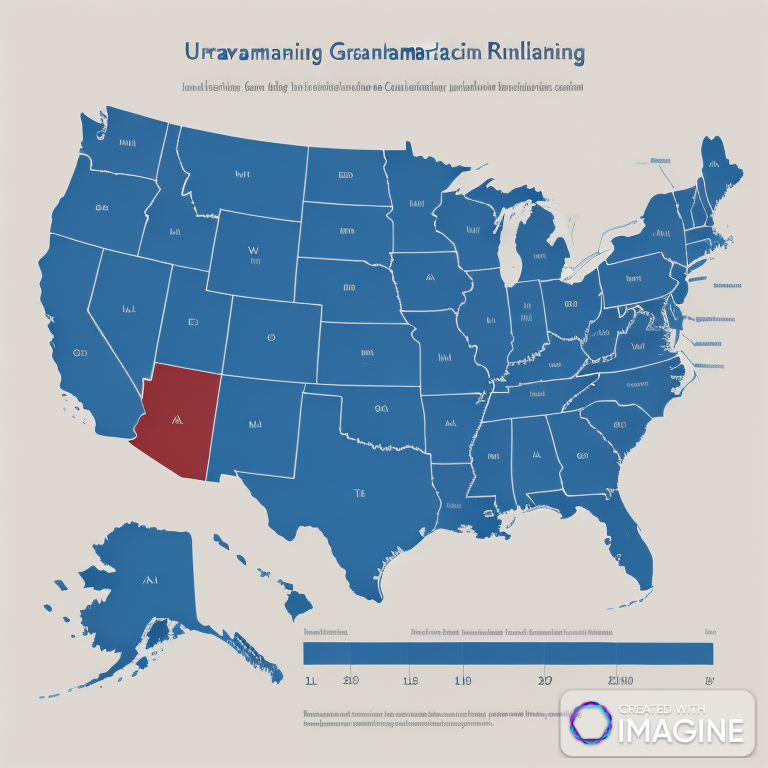Table of Contents

Explore the insidious practice of Unraveling Gerrymandering through state-level mapping projects in this comprehensive analysis. Uncover the methods, consequences, and ongoing efforts to combat gerrymandering and promote fair representation in American democracy.
Introduction:
Unraveling Gerrymandering, the practice of manipulating electoral district boundaries to favor one political party or group, has long been a contentious issue in American politics. As we delve into the intricacies of gerrymandering, it becomes evident that its impact is far-reaching, shaping the composition of legislative bodies and influencing the democratic process itself. In this comprehensive analysis, we embark on a journey to unravel gerrymandering through mapping projects conducted at the state level, shedding light on its methods, consequences, and potential remedies.
- Understanding Gerrymandering:
Before delving into state-level mapping projects, it’s essential to grasp the concept of Unraveling Gerrymandering and its various forms. Explore the history of gerrymandering in the United States, from its origins in the early 19th century to its evolution in the modern political landscape. Define the different types of gerrymandering, including partisan gerrymandering, racial gerrymandering, and incumbent gerrymandering, and examine their impact on electoral outcomes and representation.
- State Mapping Initiatives:
Across the United States, grassroots organizations, advocacy groups, and government entities have launched mapping projects to combat gerrymandering and promote fair representation. Survey the landscape of state-level mapping initiatives, from citizen-led efforts to create independent redistricting commissions to state-sponsored projects aimed at increasing transparency and public participation in the redistricting process. Explore the goals, methodologies, and outcomes of these mapping projects, and their implications for electoral fairness and democratic accountability.
- Case Studies in Gerrymandered States:
Examine case studies of states where gerrymandering has had a significant impact on electoral outcomes and representation. Take a closer look at states like North Carolina, Texas, and Wisconsin, where partisan gerrymandering has resulted in distorted electoral maps and disproportionate political power. Analyze the methods used to gerrymander districts in these states, including packing, cracking, and stacking, and the consequences for voter representation and political polarization.
- Legal Challenges and Court Decisions:
In recent years, Unraveling Gerrymandering has increasingly become the subject of legal challenges and court decisions, as advocates and litigants seek to address its constitutionality and enforce fair representation. Explore landmark court cases, such as Gill v. Whitford and Rucho v. Common Cause, where the Supreme Court grappled with the issue of partisan gerrymandering and its implications for democracy. Assess the impact of these rulings on state redistricting processes and the prospects for meaningful reform.
- Technological Innovations and Data Analysis:
Advances in technology and data analysis have revolutionized the field of redistricting and provided new tools for combatting gerrymandering. Investigate the role of GIS mapping software, demographic data, and algorithmic modeling in creating fair and competitive electoral maps. Explore how these technologies are being utilized by advocacy groups, researchers, and policymakers to detect and challenge gerrymandering, and the potential for data-driven solutions to promote transparency and accountability in the redistricting process.
- Grassroots Advocacy and Community Engagement:
At the heart of the fight against gerrymandering is grassroots advocacy and community engagement, as citizens across the country mobilize to demand fair representation and electoral reform. Spotlight the efforts of grassroots organizations, community activists, and concerned citizens who are working to raise awareness about gerrymandering, organize public forums, and mobilize support for redistricting reform. Explore the role of social media campaigns, grassroots fundraising, and direct action in amplifying the voices of those affected by gerrymandering and driving momentum for change.
- The Path Forward: Reforming Redistricting:
As we look to the future, the path forward for reforming redistricting and combatting gerrymandering becomes clear. Discuss potential solutions and policy proposals aimed at promoting fair representation and electoral integrity, such as the creation of independent redistricting commissions, the adoption of transparent redistricting criteria, and the use of ranked-choice voting and proportional representation systems. Explore bipartisan efforts to address gerrymandering at the federal level, including proposed legislation like the For the People Act and the John Lewis Voting Rights Advancement Act, and the prospects for bipartisan cooperation in the pursuit of electoral reform.
Certainly! Here are additional sections with headlines to expand on the topic of gerrymandering:
- The Role of Partisan Gerrymandering in Distorting Representation:
- Partisan Bias in Redistricting: Examining how partisan gerrymandering distorts the political landscape by disproportionately favoring one party over another in the drawing of electoral boundaries.
- Impact on Minority Representation: Analyzing the effects of partisan gerrymandering on minority representation and the dilution of minority voting power in certain districts.
- Case Study: North Carolina’s Partisan Gerrymandering: Investigating North Carolina’s history of partisan gerrymandering and its impact on congressional and state legislative districts.
- Racial Gerrymandering and Voting Rights:
- Drawing Districts Along Racial Lines: Discussing the practice of racial gerrymandering and its implications for the voting rights of minority communities.
- Legal Challenges to Racial Gerrymandering: Exploring landmark court cases addressing racial gerrymandering, such as Shaw v. Reno and Cooper v. Harris.
- The Intersection of Race and Partisanship: Analyzing how racial and partisan gerrymandering intersect, particularly in Southern states with a history of racial discrimination in redistricting.
- Efforts to Combat Gerrymandering Through State-Level Reforms:
- Citizen-Led Redistricting Initiatives: Highlighting grassroots efforts to reform redistricting through citizen-led ballot initiatives and state constitutional amendments.
- Independent Redistricting Commissions: Examining the role of independent redistricting commissions in promoting fairness and transparency in the redistricting process.
- Success Stories and Challenges: Showcasing states that have successfully implemented redistricting reforms and the challenges they faced in doing so.
- The Impact of Technology on Redistricting:
- GIS Mapping and Data Analysis: Exploring how GIS mapping software and data analysis tools are used to analyze and visualize voting patterns and demographics.
- Algorithmic Modeling and Fair Districting: Discussing the potential of algorithmic modeling to create fair and competitive electoral maps that prioritize communities of interest.
- Tech-Savvy Advocacy: Highlighting tech-savvy advocacy organizations and their use of data-driven approaches to combat Unraveling Gerrymandering and promote electoral reform.
- International Perspectives on Gerrymandering and Electoral Integrity:
- Comparative Analysis: Comparing gerrymandering practices in the United States with those in other countries and examining international efforts to combat electoral manipulation.
- Lessons from Abroad: Drawing lessons from countries that have successfully implemented electoral reforms to promote fairness and transparency in redistricting.
- The Global Fight for Electoral Integrity: Exploring how the fight against gerrymandering fits into broader international efforts to safeguard electoral integrity and strengthen democratic institutions.
- Public Awareness Campaigns and Civic Education:
- Raising Awareness: Discussing the importance of public awareness campaigns in educating voters about gerrymandering and its impact on democracy.
- Civic Education Initiatives: Highlighting civic education initiatives aimed at empowering citizens to understand the redistricting process and advocate for fair representation.
- Youth Engagement: Exploring efforts to engage young people in the fight against gerrymandering through school-based programs, youth-led organizations, and digital outreach campaigns.
- The Future of Gerrymandering and Prospects for Reform:
- Evolving Legal Landscape: Speculating on the future of gerrymandering litigation in light of recent Supreme Court decisions and the potential for further legal challenges.
- Growing Momentum for Reform: Assessing the growing momentum for redistricting reform at the state and federal levels and the prospects for bipartisan cooperation in addressing gerrymandering.
- The Role of Public Pressure and Advocacy: Discussing the importance of sustained public pressure and advocacy in driving meaningful reform and ensuring fair representation in American democracy.
These additional sections provide a more in-depth exploration of gerrymandering and its implications, as well as the efforts underway to combat it and promote electoral integrity.
Conclusion:
Gerrymandering remains a persistent challenge to the principles of democracy and representative government, but it is not insurmountable. Through mapping projects, legal challenges, technological innovations, grassroots advocacy, and bipartisan cooperation, we have the power to combat Unraveling Gerrymandering and restore integrity to the electoral process. By shining a light on gerrymandering and mapping its impact at the state level, we can empower citizens to demand fair representation, promote electoral reform, and uphold the fundamental principles of democracy for generations to come.

